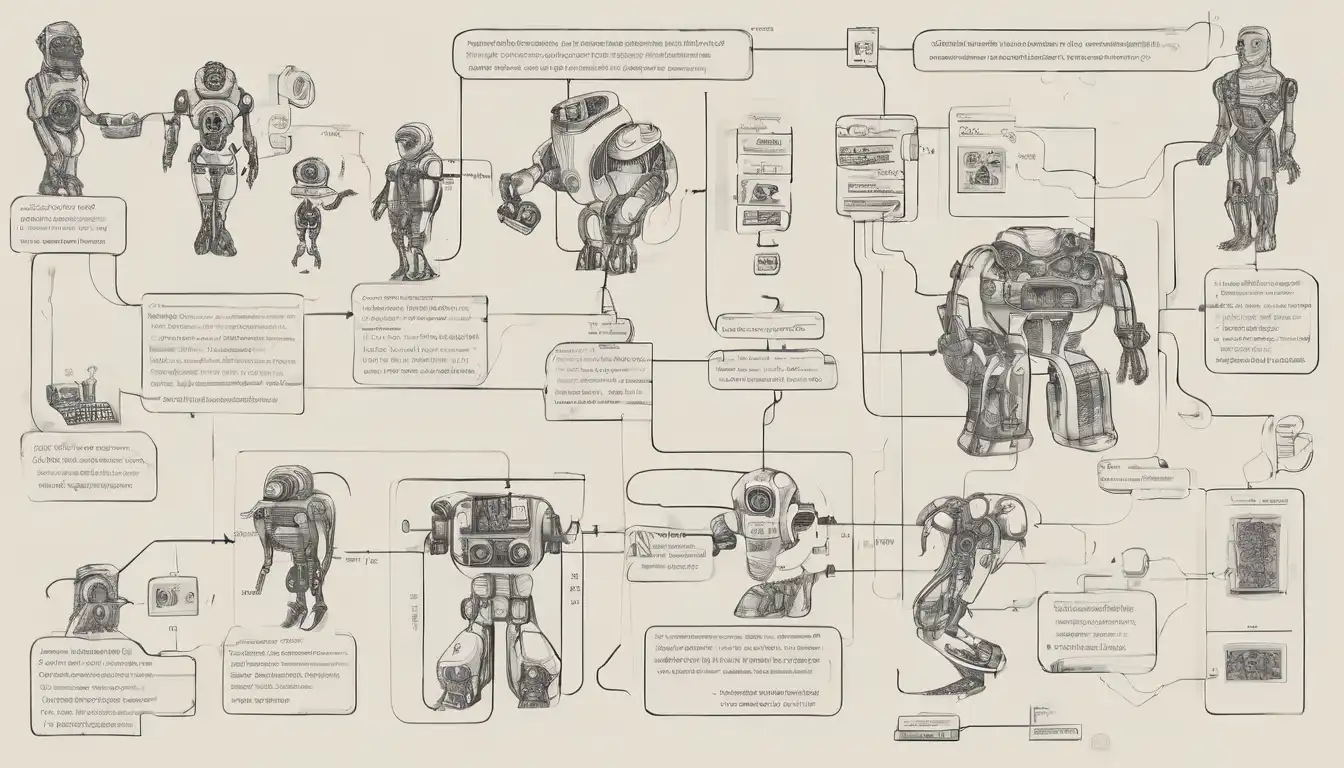Essential Machine Learning Algorithms Every Developer Must Master
In today's rapidly evolving technological landscape, machine learning has become an indispensable skill for developers across all domains. Whether you're building web applications, mobile apps, or enterprise software, understanding core machine learning algorithms can significantly enhance your capabilities and career prospects. This comprehensive guide covers the fundamental algorithms that form the backbone of modern AI applications.
Why Machine Learning Matters for Developers
Machine learning is no longer confined to data science teams or AI research labs. Modern developers encounter ML-powered features in everyday tools, from recommendation systems and fraud detection to natural language processing and computer vision. By understanding these algorithms, developers can better integrate ML capabilities, debug ML-powered applications, and contribute to AI-driven projects effectively.
Supervised Learning Algorithms
Linear Regression
Linear regression is the foundation of predictive modeling, used for forecasting continuous values based on historical data. This algorithm establishes a linear relationship between input features and target variables, making it ideal for price prediction, sales forecasting, and trend analysis. Developers should master linear regression as it introduces fundamental concepts like gradient descent and cost functions that apply to more complex algorithms.
Logistic Regression
Despite its name, logistic regression is primarily used for classification tasks. It predicts binary outcomes by estimating probabilities using a logistic function. This algorithm is essential for spam detection, customer churn prediction, and medical diagnosis systems. Its interpretability makes it valuable for applications where understanding feature importance is crucial.
Decision Trees
Decision trees create intuitive, tree-like models that mimic human decision-making processes. Each node represents a feature test, branches represent outcomes, and leaves represent final decisions. This algorithm excels in scenarios requiring transparent decision logic, such as credit scoring and customer segmentation. Developers appreciate decision trees for their visual interpretability and handling of both numerical and categorical data.
Random Forests
Random forests address decision trees' tendency to overfit by combining multiple trees through ensemble learning. By aggregating predictions from numerous decision trees, random forests deliver robust, accurate results while maintaining resistance to overfitting. This algorithm is particularly effective for complex classification tasks and feature importance analysis.
Support Vector Machines (SVM)
SVMs are powerful for both classification and regression tasks, especially effective in high-dimensional spaces. They work by finding the optimal hyperplane that separates different classes with maximum margin. SVMs shine in text classification, image recognition, and bioinformatics applications where clear separation boundaries exist.
Unsupervised Learning Algorithms
K-Means Clustering
K-means is the go-to algorithm for partitioning data into distinct groups based on similarity. It automatically identifies natural clusters in unlabeled data, making it invaluable for customer segmentation, document classification, and image compression. Developers use k-means for exploratory data analysis and pattern discovery in large datasets.
Principal Component Analysis (PCA)
PCA reduces dataset dimensionality while preserving essential information. By transforming correlated features into orthogonal principal components, PCA helps visualize high-dimensional data and improves algorithm performance. This technique is crucial for feature engineering, data compression, and noise reduction in preprocessing pipelines.
Apriori Algorithm
The Apriori algorithm specializes in association rule learning, identifying frequent itemsets and discovering relationships between variables. It's the foundation for market basket analysis, recommendation systems, and cross-selling strategies. E-commerce developers particularly benefit from understanding Apriori for building personalized shopping experiences.
Neural Networks and Deep Learning
Multilayer Perceptrons (MLP)
MLPs represent the fundamental architecture of deep learning, consisting of multiple layers of interconnected neurons. These networks can approximate complex non-linear relationships, making them suitable for image recognition, speech processing, and time series prediction. Understanding MLPs provides the foundation for more advanced neural network architectures.
Convolutional Neural Networks (CNN)
CNNs revolutionized computer vision by automatically learning spatial hierarchies of features. Their specialized architecture includes convolutional layers for feature extraction and pooling layers for dimensionality reduction. Developers working with image data, video analysis, or computer vision applications must understand CNN fundamentals.
Recurrent Neural Networks (RNN)
RNNs handle sequential data by maintaining internal memory, making them ideal for time series analysis, natural language processing, and speech recognition. Long Short-Term Memory (LSTM) and Gated Recurrent Unit (GRU) variants address traditional RNN limitations, enabling better handling of long-term dependencies.
Reinforcement Learning Fundamentals
Q-learning represents the entry point to reinforcement learning, where agents learn optimal actions through trial and error. This algorithm underpins game AI, robotics, and autonomous systems. Developers interested in building adaptive, self-improving systems should grasp Q-learning concepts and implementation strategies.
Choosing the Right Algorithm
Selecting appropriate machine learning algorithms depends on multiple factors: dataset size, problem type (classification vs. regression), feature characteristics, and computational constraints. Linear models work well for linearly separable data, while tree-based methods handle complex relationships. Neural networks excel with large datasets and complex patterns, though they require significant computational resources.
Implementation Considerations
Successful machine learning implementation involves more than algorithm selection. Developers must consider data preprocessing, feature engineering, model evaluation, and deployment strategies. Tools like Scikit-learn, TensorFlow, and PyTorch provide robust frameworks for implementing these algorithms efficiently. Understanding cross-validation, hyperparameter tuning, and performance metrics ensures models generalize well to new data.
Staying Current with Algorithm Evolution
The machine learning landscape continuously evolves with new algorithms and improvements to existing ones. Developers should monitor advancements in transformer architectures, graph neural networks, and federated learning. Participating in open-source projects, attending conferences, and following research publications helps maintain cutting-edge knowledge.
Practical Learning Path
Start with linear regression and logistic regression to build foundational understanding, then progress to tree-based algorithms before tackling neural networks. Practical projects implementing each algorithm reinforce theoretical knowledge. Many online platforms offer hands-on machine learning courses with real-world datasets for practice.
Mastering these essential machine learning algorithms empowers developers to create intelligent applications, contribute meaningfully to AI projects, and advance their careers in an increasingly AI-driven world. The combination of theoretical understanding and practical implementation experience forms the cornerstone of modern development expertise.
